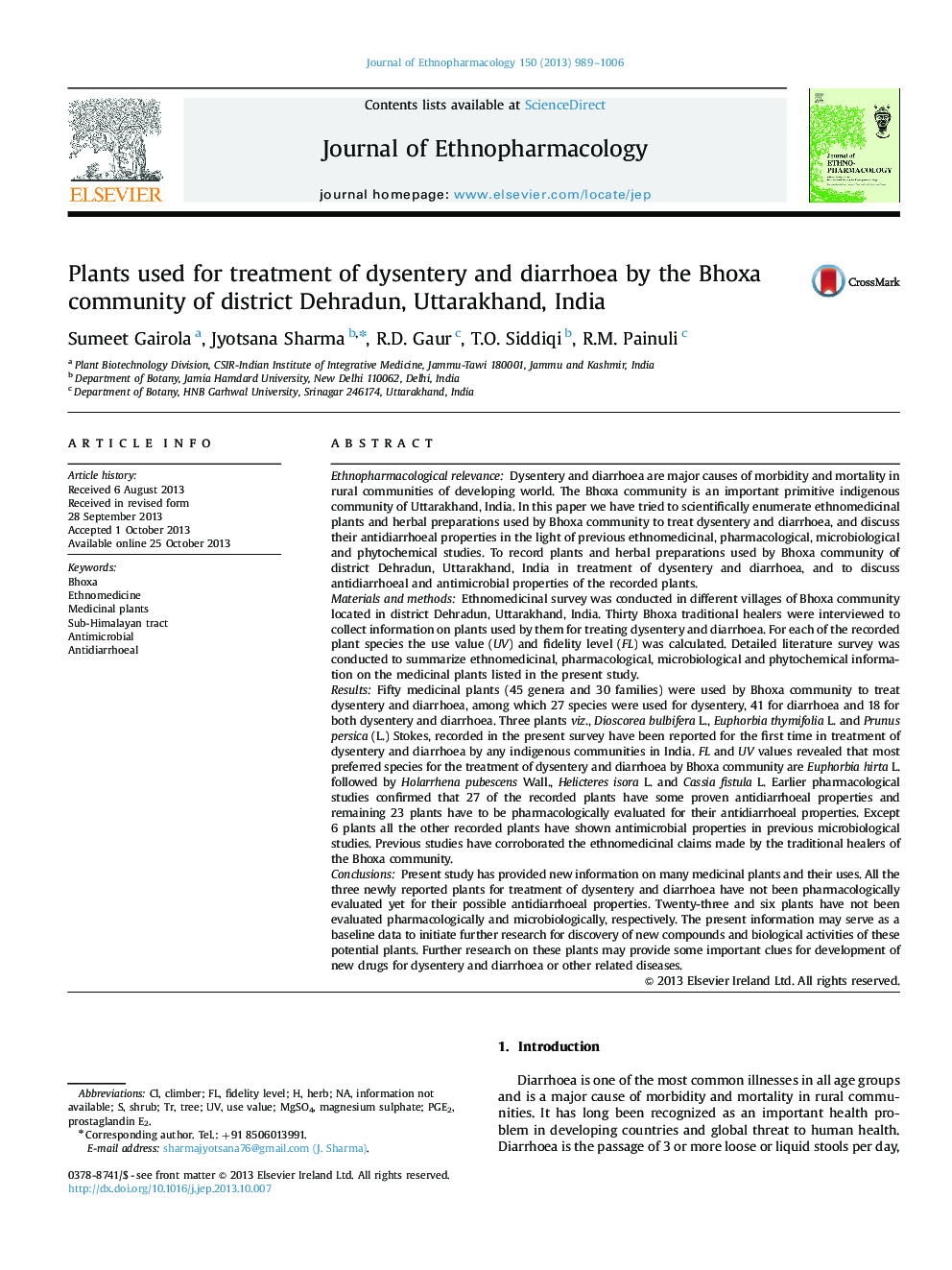| Article ID | Journal | Published Year | Pages | File Type |
|---|---|---|---|---|
| 2545340 | Journal of Ethnopharmacology | 2013 | 18 Pages |
Ethnopharmacological relevanceDysentery and diarrhoea are major causes of morbidity and mortality in rural communities of developing world. The Bhoxa community is an important primitive indigenous community of Uttarakhand, India. In this paper we have tried to scientifically enumerate ethnomedicinal plants and herbal preparations used by Bhoxa community to treat dysentery and diarrhoea, and discuss their antidiarrhoeal properties in the light of previous ethnomedicinal, pharmacological, microbiological and phytochemical studies. To record plants and herbal preparations used by Bhoxa community of district Dehradun, Uttarakhand, India in treatment of dysentery and diarrhoea, and to discuss antidiarrhoeal and antimicrobial properties of the recorded plants.Materials and methodsEthnomedicinal survey was conducted in different villages of Bhoxa community located in district Dehradun, Uttarakhand, India. Thirty Bhoxa traditional healers were interviewed to collect information on plants used by them for treating dysentery and diarrhoea. For each of the recorded plant species the use value (UV) and fidelity level (FL) was calculated. Detailed literature survey was conducted to summarize ethnomedicinal, pharmacological, microbiological and phytochemical information on the medicinal plants listed in the present study.ResultsFifty medicinal plants (45 genera and 30 families) were used by Bhoxa community to treat dysentery and diarrhoea, among which 27 species were used for dysentery, 41 for diarrhoea and 18 for both dysentery and diarrhoea. Three plants viz., Dioscorea bulbifera L., Euphorbia thymifolia L. and Prunus persica (L.) Stokes, recorded in the present survey have been reported for the first time in treatment of dysentery and diarrhoea by any indigenous communities in India. FL and UV values revealed that most preferred species for the treatment of dysentery and diarrhoea by Bhoxa community are Euphorbia hirta L. followed by Holarrhena pubescens Wall., Helicteres isora L. and Cassia fistula L. Earlier pharmacological studies confirmed that 27 of the recorded plants have some proven antidiarrhoeal properties and remaining 23 plants have to be pharmacologically evaluated for their antidiarrhoeal properties. Except 6 plants all the other recorded plants have shown antimicrobial properties in previous microbiological studies. Previous studies have corroborated the ethnomedicinal claims made by the traditional healers of the Bhoxa community.ConclusionsPresent study has provided new information on many medicinal plants and their uses. All the three newly reported plants for treatment of dysentery and diarrhoea have not been pharmacologically evaluated yet for their possible antidiarrhoeal properties. Twenty-three and six plants have not been evaluated pharmacologically and microbiologically, respectively. The present information may serve as a baseline data to initiate further research for discovery of new compounds and biological activities of these potential plants. Further research on these plants may provide some important clues for development of new drugs for dysentery and diarrhoea or other related diseases.
Graphical abstractFigure optionsDownload full-size imageDownload high-quality image (218 K)Download as PowerPoint slide
